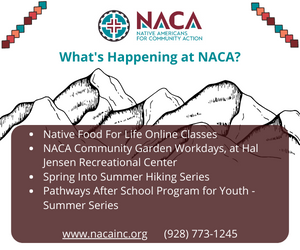 The RB Burnham Trading Post exists in two worlds. There’s its home in Sanders on the Navajo reservation. Then there’s the outside world, the one that passes through in a trickle of tourists, the one that five generations of Burnhams have greeted, and more recently, traveled out to meet.
The RB Burnham Trading Post exists in two worlds. There’s its home in Sanders on the Navajo reservation. Then there’s the outside world, the one that passes through in a trickle of tourists, the one that five generations of Burnhams have greeted, and more recently, traveled out to meet.
The trading post started in Dinnebito, but moved to Sanders in the early 1970s. Later, the reservation expanded around the trading post so today, it is surrounded by reservation land.
The day-to-day business has followed the same path for decades, supplying the locals with everything from groceries, household goods and yarns for weaving to video rentals, while taking in jewelry, art and rugs from artisans. It’s steeped in the kind of history and charm that keep tourists coming back.
Thirteen years ago, Bruce and his daughter, Sheri Burnham – generations four and five to operate the family business – decided to push beyond their boundaries. They went to auction school and started holding Navajo rug auctions.
The early auctions drew as few as nine bidders. Now they draw healthier crowds, even in tight economic times.
“Thank goodness we’ve started the auction process as another venue to sell,” said Sheri Burnham. “What we see, [the economy] hasn’t impacted us in a major way. But we have to hit the road.”
And so they do, holding 13 auctions per year, each partnered with a nonprofit. Two are in Flagstaff and benefit Flagstaff Cultural Partners (a joint venture of the Coconino Center for the Arts and Flagstaff Arts Council) and the Museum of Northern Arizona. One is as far off as Indianapolis. Most of the rest are in the Four Corners area.
And there’s strategy to the scheduling. Auctions in the Valley do better in winter, for example, because of visiting snowbirds.
“We actually produce the auctions and bring in the Burnhams. We contract them to be our auctioneers. The goods come from the community at large. Weavers and people who come from the community consign them,” said John Tannous, executive director of Coconino Center for the Arts.
“Those consigners come to us here in Flagstaff directly, but they also go to the Burnham trading post out in Sanders. About half of the inventory of each auction will be consigned through the Burnhams at the trading post, and half of it will be from people who come here and consign in Flagstaff.”
If the auction circuit conjures images of an old trader hauling rugs on a mule, think again. The Burnhams do about $1 million a year in volume because of the rug auctions, Sheri Burnham says.
Each auction features hundreds of hand-woven rugs, each a work of art. They range in size, style and color, but all are of Navajo origin. It’s not unusual for some of the weavers to be in the audience, and buyers can persuade them to pose for pictures with their rugs (such photos help establish the provenance for collectors).
“It’s important to the weavers. We don’t do it just because it benefits us financially, we do it because it creates an opportunity for the
community to purchase the rugs,” Tannous said. “[The rugs] are an important art form. It is intricate work, it is beautiful work and it deserves attention not only in the art world but in the community as a whole.”
The weavers also get better prices for their work in an auction environment, the Burnhams say.
“The best part of the job is the people,” said Bruce Burnham, whose wife is Navajo. “I’m a Navajo people person. Everything about my job is the love for the Navajo.”
The Burnhams don’t take home all the cash. They get a 10 percent premium on the final price of each item. The weaver or consigner gets 80 percent and, in the case of the Flagstaff auctions, Flagstaff Cultural Partners and MNA split about 20 percent.
The most recent auction, Nov. 6, brought in $62,007 total, which means the art organiza- tions get $7,380. That’s down from when the auctions started before the recession, but is starting to rebound. The first auction, in June 2008, raised $125,136, of which the groups got $10,815. Tannous sees that as a reflection of the broader economy.
“This one that we did in June of 2010, of all the auctions that we’ve done since the first one, got us back up to that number,” he said. “The auctions sort of mirror what’s going on in the general economy. It’s starting to get better.”
Even so, the challenging economy has brought out sellers looking to make ends meet by selling family heirlooms or items from collections.
“We have more consigners than we have spaces,” Sheri Burnham said. “I’m seeing more people wanting to sell their stuff. With the weavers, artists and consigners, we have more than we can sell.”
The Burnhams inspect consignment items prior to auctions to make sure the seller is expecting an appropriate price, and to make sure they have something in every price range.
“I’m making sure the prices match the inventory,” Sheri Burnham said. “To keep succeeding, we have to have something from every level.”
On auction day, potential bidders have several hours to inspect the goods before the bidding starts.
“You can see them, touch them, see how finely they are woven and lay them out on the floor,” Tannous said. “They learn not only from the weavers but also the Burnhams, who are fifth generation traders and know more about the fine art aspect than most.”
The Burnhams visit, appraise and educate as bidders inspect the goods. Bruce Burnham is the sort of fellow who makes it nearly impossible to be uncomfortable, even for novice collectors. His warm personality and quick laugh put people at ease.
“Character is probably an understatement,” Tannous said. “He’s a national treasure.”
Rugs sell for anywhere from $100 to $10,000, depending on size, intricacy and quality. The artisan’s reputation and who’s bidding
can also be factors. “We still need to keep it diversified. A lot of these people are not sophisticated buyers,” Sheri Burnham said. Those people need to feel comfortable buying, and part of making that happen is Bruce’s auction style.
He’s part storyteller, part encyclopedia, part comedian as he banters through the list of items for sale. Assistants parade the items before bidders while he tells about the style, materials and weavers.
“He is entertaining,” said Tannous. “He’s just got this sort of cowboy charm to him. He’s telling jokes throughout, and he’s mixing in edu- cation. He’s telling people about the weavers and where they come from.”
The weavings aren’t just beautiful; they are a good investment, Tannous says.
“It’s an amazing investment. Purchasing a Navajo weaving, the value does not really go down on them. You might have trouble selling them right now, but generally the value usually goes up or holds steady,” he said.
That is one reason another popular aspect of the auctions is appraisals. Anyone can bring a native rug in and get a profes- sional appraisal for $25 – also split with the nonprofit. Sometimes that leads to an “Antiques Roadshow” moment, as Don Richard of Flagstaff found out Nov. 6.
He brought in two rugs that had been in his family for years that he plans to pass along to his children. One was a grayscale geometric Bruce Burnham judged as a fairly common saddle blanket for its age. The other was a colorful rug about four feet long.
“I should be paying you for bringing that in to see,” Burnham quipped as he rendered his verdict. This one, he declared, was a Germantown style rug, circa 1890, valued between $7,000 and $12,000.
The 2011 auctions with Flagstaff Cultural Partners are scheduled for June 11 and Nov. 5. FBN
The trading post makes a great day trip and also sells from its web site: R.B. Burnham and Co. http://www.culturalpartners.org/





